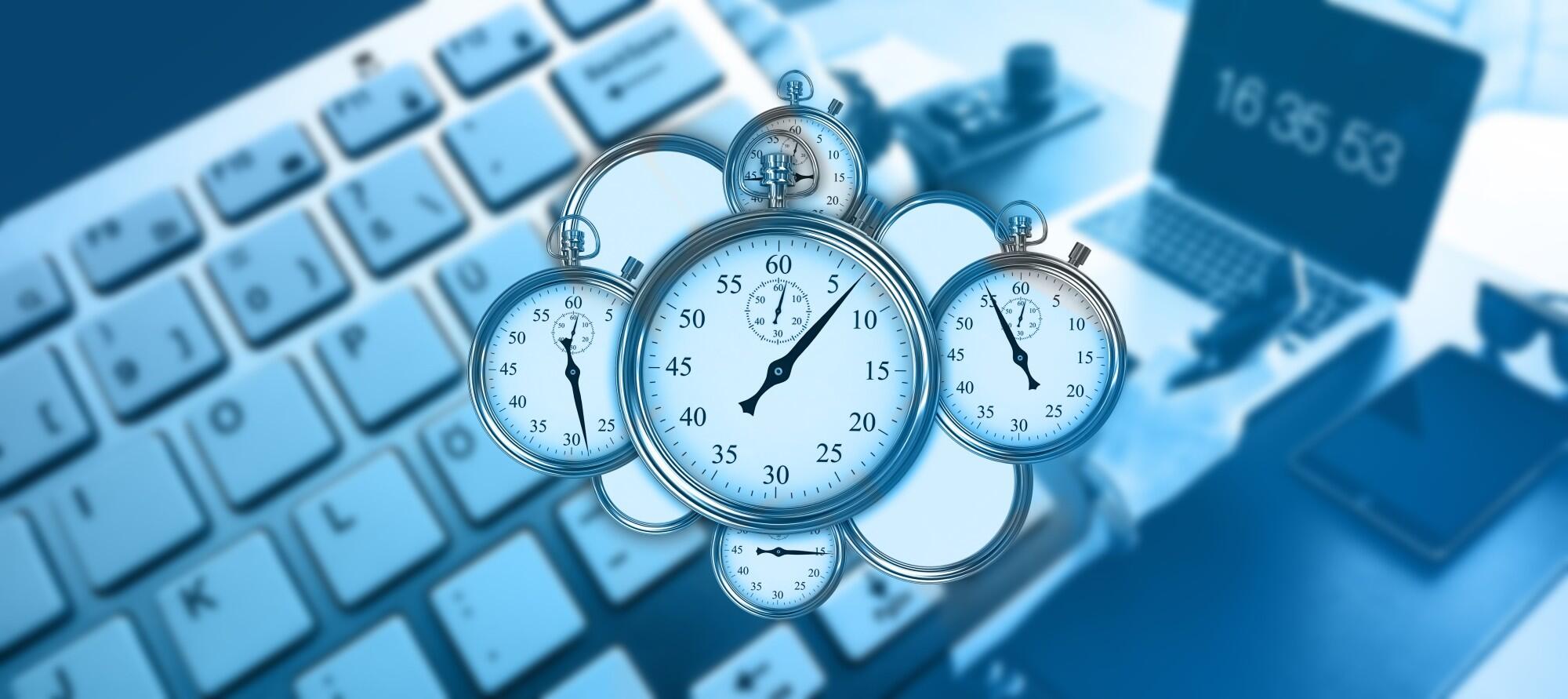Take a guess at how many hours the average employee steals from their employer. Half an hour, one hour, may two with the lowest achievers? Try four hours every single week. Time theft is just one of many ways employees can take advantage of the boss. During projects, they can goof around while claiming to have put in a full shift. These time clock shenanigans won’t rear their ugly heads until crunch time arrives and the project is far from completion. You need a time tracking system to keep employees on track–no pun intended.
Most time tracking software can get the job done, but not all of it will make for an efficient and effective long-term solution. In this guide, we’ll give you everything you need to choose the right time tracking software for your business.
Time Clock vs. Time Tracking System: What’s the Difference?
Your first thought upon seeing the words time tracking system was probably a time clock. These are similar systems that sometimes overlap and perform the same function. However, each has its own unique use case.
A Time Clock System
A time clock is very simple: it records when the employee begins and ends their shift. A time clock’s prime focus is keeping a record of hours worked. Since it’s illegal to make workers labor without pay, you need a paper trail.
Any additional features only serve to improve convenience and record-keeping. They can help make payroll and tax records easier to manage.
A Time Tracking System
A time tracking system, on the other hand, homes in on what an employee does with their on-the-clock time. Particularly, it keeps an eye on their project-related time expenditures. Employees can then see how long employees devote to specific tasks.
Some companies combine the features of a time clock and a time tracker into one app.
Key Features to Look for in a Time and Attendance Tracking System
Google time tracking software, and you’re bound to get a long list of options. Some of them might even be free–a risky proposition since they have to sell your data to keep it free.
However, not all time tracking software options are equal. You get what you pay for, and it’s a bad idea to dive into software that entices you with snappy advertising and suspiciously low prices. Building your time-keeping records on this shaky foundation could give you a real headache later on.
Let’s go one by one with the things that matter most.
1. Built-In Features
Good time tracking software goes beyond just recording hours and gives you tools to do things with them. For example, it might help to set budgets, or bill clients based on hours worked.
Look for a time tracker that gives you analytical and overview tools. You want to be able to get a bird’s eye view of the situation at the office. Time trackers than can break up tasks easily and help you to balance out hours are ideal.
2. Integration With Your Existing Systems
A new time tracker is worthless if it doesn’t work with what you already have. It could waste a lot of valuable time if there is no easy, straightforward way to move data from one system to another.
For example, you may want to move your hours over to payroll on payday. This should hopefully be a one-click solution, rather than a complicated export and import system.
3. Pricing
Most time tracking solutions come with pricing tiers. Each tier gives you additional features, with the premium tier having it all.
Of course, you don’t want to buy software that breaks the bank. But also take into account whether or not you need all the features included in a higher tier.
Companies will try hard to sell you those premium tiers to get the most money possible. Recognize this for the advertising tactic it is. If you purchase a higher tier but recognize that you only need the core features, don’t hesitate to downgrade.
Some services will charge you per user, or use a blanket subscription fee. Make sure you’re no overpaying for a package that supports a much larger team.
4. Cloud or Web-Based Options
Everything runs on the cloud these days, and for good reason. Instead of relying on software that resides on a single device, you can use the same software across multiple devices–keeping them all in sync. Even easier, you can use a web client and avoid having employees install the software altogether.
This makes it dead simple for employees to track their time, at the office or elsewhere. Employees who are working from home or out on the road can use their smartphones to log hours.
5. Ease of Use
Is the software you’ve selected intuitive, and easy to use? Your employees should be able to open it and understand how to document time usage without instructions. Software that makes simple tasks complicated isn’t worth it.
Simple-to-use software saves your employees time and gets them back to the task at hand. Complicated software causes unnecessary frustration and makes your employees waste precious work hours.
Additional Tips for Time Tracking Software
Take advantage of free trials where possible. Trial as much competing software as you can. This gives you a chance to see what they’re capable of before committing to them and paying full price.
Avoid locking yourself into a long subscription. Every software needs to prove itself with your existing systems and workflow. You may find that after a few months, the software you’ve chosen isn’t working out as you hoped.
Get Time Tracker Software from TimeTrak
A time tracking system is a useful tool to have for those who need project or task-based time management. Unlike a time clock, it gets into the nitty gritty of how your employees spend their working hours. Do your research before committing to any software, but know you have a lot of options out here.
TimeTrak has the last time tracking system you’ll ever need. It doesn’t matter if you’re a small business or a large enterprise. Check out our website and find a time tracking system that checks all the boxes for you.




